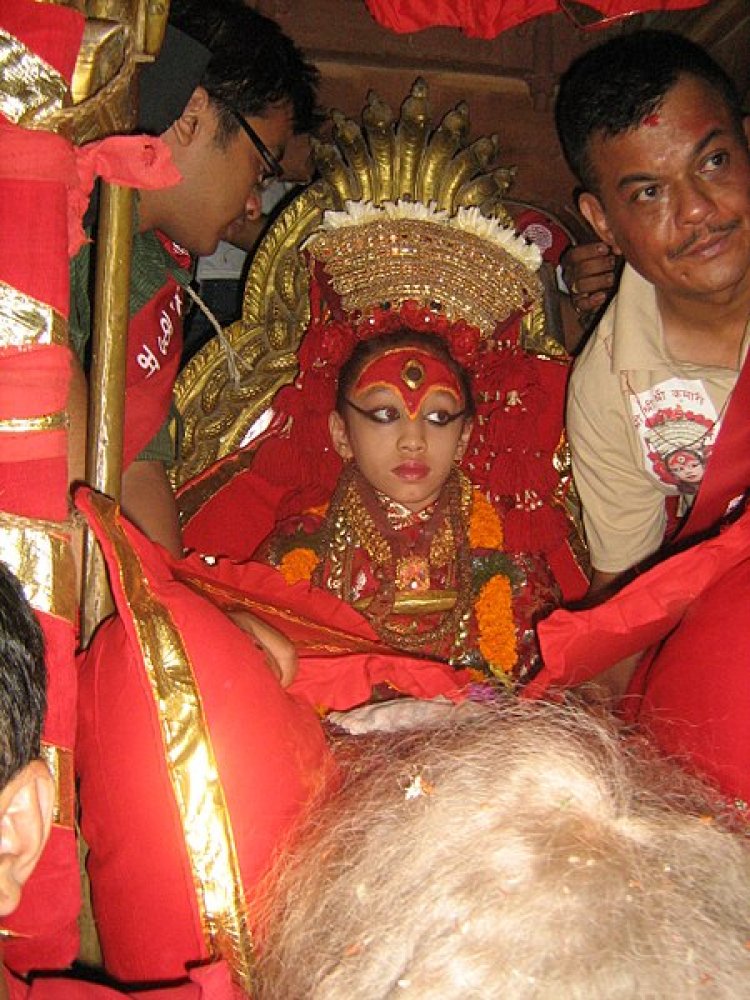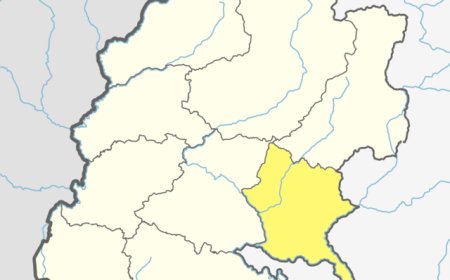The Goddess Kumari: A Revered Tradition in Nepal
Discover the mystical and revered Goddess Kumari, the Living Goddess of Nepal. Explore her ancient origins, selection process, and role in Nepali culture. Immerse yourself in the divine embodiment and spiritual significance of the Goddess Kumari.

Goddess Kumari, also known as the Living Goddess, is a revered and unique tradition in Nepal that dates back several centuries. Here is a historical overview of the Goddess Kumari and her significance in Nepalese culture. Nestled in the heart of the Kathmandu Valley in Nepal, there exists a timeless tradition that has captivated the imagination of people worldwide. The Kumari, or Living Goddess, is a revered figure believed to be the manifestation of the divine feminine energy. Steeped in history, mysticism, and devotion, the institution of the Kumari has been an integral part of Nepal's cultural and religious fabric for centuries. In this article, we delve into the captivating story of the Goddess Kumari, her role in Nepali society, and the significance she holds for the people.
Ancient Origins
The origins of the Kumari tradition in Nepal are deeply rooted in ancient folklore and religious beliefs. While the exact historical origins are shrouded in legends and myths, the tradition is said to have its beginnings in the Kathmandu Valley several centuries ago.
One prevalent legend tells the story of a king named Jayaprakash Malla, who ruled over the Kathmandu Valley during the medieval period. According to the legend, the king had a vision in which the Hindu goddess Taleju appeared to him, instructing him to find a young girl to be worshipped as the living embodiment of the goddess. The king followed the divine command and established the Kumari tradition in Nepal.
Another story associated with the Kumari tradition dates back to the Licchavi dynasty, which ruled Nepal between the 4th and 9th centuries. It is believed that during this era, a princess named Bhrikuti, who was married to the Tibetan king Songtsen Gampo, was considered a manifestation of the goddess Taleju. The Kumari tradition is said to have emerged from the worship of Bhrikuti as the living goddess.
These legends and historical narratives demonstrate the deep intertwining of Hindu and Buddhist beliefs in Nepal. The Kumari tradition itself is a reflection of the fusion of these religious traditions, as both Hindus and Buddhists revere the Kumari as a divine figure.
Selection Process
The selection process typically involves several stages, including the following:
-
Eligibility Criteria:
The committee sets specific eligibility criteria, such as age and family background, for the candidates. Generally, the Kumari is chosen from the Newar community, which is an indigenous community in the Kathmandu Valley.
-
Physical attributes:
The selection process for a Kumari involves a thorough examination of physical attributes, including flawless skin, clear complexion, expressive eyes, overall health, and overall well-being. The committee ensures the chosen Kumari is capable of fulfilling her duties and maintaining her position with grace and vitality.
-
Horoscope Evaluation:
The selection committee carefully examines horse scopes of potential Kumari candidates to determine their astrological compatibility with the goddess Taleju. Astrology holds cultural and religious significance in Nepal, and the committee considers factors like planetary alignments, auspicious combinations, and harmonious aspects. The committee also examines astrological houses, such as the first house and the fifth house, to enhance the candidate's ability to embody Kumari's divine qualities.
-
Fearlessness Test:
The fearlessness test is a crucial aspect of the Kumari selection process, evaluating candidate's ability to remain composed and courageous in intimidating situations. The test is conducted in a haunting environment, with masked dancers and musicians. The selection committee closely observes candidate's reactions and assesses their mental strength and courage. The test, along with other criteria, aims to identify an exceptional individual with the qualities of a Kumari, embodying divine grace, fearlessness, and spiritual strength.
-
Knowledge and Aptitude:
The selection process involves evaluating shortlisted candidate's knowledge of religious and cultural traditions, as well as their aptitude for performing rituals and ceremonies related to the Kumari role. The committee assesses candidate's understanding of religious texts, mythologies, and rituals, as well as their practical skills and communication abilities. The committee aims to select candidates who embody the essence of the Kumari, a divine figure deeply rooted in Nepal's cultural and religious traditions.
-
Final approval:
The committee makes the final decision to select Kumari, a young girl who will embody the divine presence of the goddess Taleju. A senior Buddhist monk conducts a ceremony to validate and affirm Kumari's divine connection. The ritual, infused with prayers, incense, and sacred chants, establishes a sacred bond between the Kumari and the deity. The Kumari assumes her role as a living goddess, carrying forth traditions and blessings. The committee's careful assessments and spiritual affirmation ensure the continuation of this revered tradition, preserving Nepal's cultural and religious fabric for generations to come.
Goddess Kumari's Role
Once chosen, the girl undergoes an intense training process to prepare her for her role as the Living Goddess. She is isolated from her family and resides in the Kumari Ghar (Kumari House). During her tenure, she represents the Hindu goddess Taleju, receiving visits from devotees, dignitaries, and tourists seeking her blessings.
Some of the key roles and responsibilities of the Goddess Kumari include:
-
Religious Significance:
The Kumari tradition is deeply rooted in Nepal's religious and cultural heritage. The Living Goddess is seen as an embodiment of divine femininity and a source of blessings and protection for the nation. Devotees believe that receiving Kumari's blessings can bring prosperity, good fortune, and protection from evil spirits. The Kumari is regarded as a revered deity and is worshipped by both Hindus and Buddhists. Her selection and presence symbolize the divine connection between the mortal world and the spiritual realm. Devotees seek her blessings and guidance during religious ceremonies and festivals.
-
Ceremonial Performances:
The Kumari plays a crucial role in various religious and cultural ceremonies. She is invited to bless important events, such as the coronation of kings, public processions, and religious rituals. Her participation is believed to enhance the auspiciousness and spiritual significance of these occasions. During the Indra Jatra festival, she leads the chariot procession of Lord Ganesh and Bhairav. The Dashain festival is another important occasion where the Kumari blesses the King and the public.
-
Blessings and Healing:
It is believed that the Kumari possesses the power to bestow blessings and grant wishes to her devotees. People visit her to seek her blessings for good health, prosperity, and protection from evil. The Kumari's touch or sight is considered auspicious and believed to bring healing and positive energy.
-
Symbol of Purity and Power:
The Kumari is considered a symbol of purity and divine energy. Her unblemished appearance, untainted by worldly experiences, is seen as a representation of spiritual purity. Her role as the Living Goddess also signifies the power and authority associated with the divine feminine.
-
Cultural Preservation:
The Kumari, a living goddess, is a symbol of Nepal's cultural heritage and spiritual wisdom. She represents the country's unique identity and promotes cultural preservation through her presence at religious and cultural events. Her presence also fosters national pride and unity, uniting people from diverse backgrounds under a shared cultural umbrella. The Kumari's influence extends beyond her lifetime, enriching the lives of those fortunate enough to witness and partake in this extraordinary tradition.
-
Spiritual Guidance:
The Kumari, an embodiment of the goddess Taleju, is a revered figure sought after by devotees seeking guidance and blessings for personal and spiritual matters. Her divine presence and connection to the spiritual realm make her a revered figure, offering solace, clarity, and direction in times of need. Her words carry spiritual power and comfort, guiding individuals towards paths aligned with their spiritual journeys. Her guidance extends beyond personal matters to communal and societal issues, shaping important decisions that affect the larger community.
Controversies and Criticisms
The Kumari tradition has faced criticisms and controversies over the years. Some argue that the practice infringes upon the rights of the selected girls, as they undergo strict isolation and lose out on a normal childhood. Efforts have been made to address these concerns, including provisions for education and support for the Kumari after retirement.
Changes in the Tradition
In recent years, the Kumari tradition has evolved to adapt to changing societal norms. The government and cultural organizations have introduced reforms to ensure the well-being and education of the Kumari during and after their tenure. The tradition also embraces a more inclusive approach, allowing the participation of girls from diverse backgrounds.
The Legacy of the Living Goddess
The tradition of the Goddess Kumari holds immense cultural and religious significance in Nepal. It is a living symbol of the country's rich heritage, spirituality, and devotion. Despite the challenges and debates surrounding the tradition, the Goddess Kumari remains an integral part of Nepalese identity and continues to be revered by both locals and visitors alike.
The Goddess Kumari tradition stands as a unique aspect of Nepal's cultural and religious fabric. The Kumari is a symbol of divine power and spiritual guidance. Despite challenges, the Kumari remains an integral part of Nepal's cultural identity, symbolizing devotion, faith, and the enduring spirit of the Nepalese people. With its deep historical roots and evolving nature, it represents the country's reverence for divinity and the preservation of age-old traditions, making it a fascinating and cherished part of Nepal's cultural heritage.
What's Your Reaction?





































































































